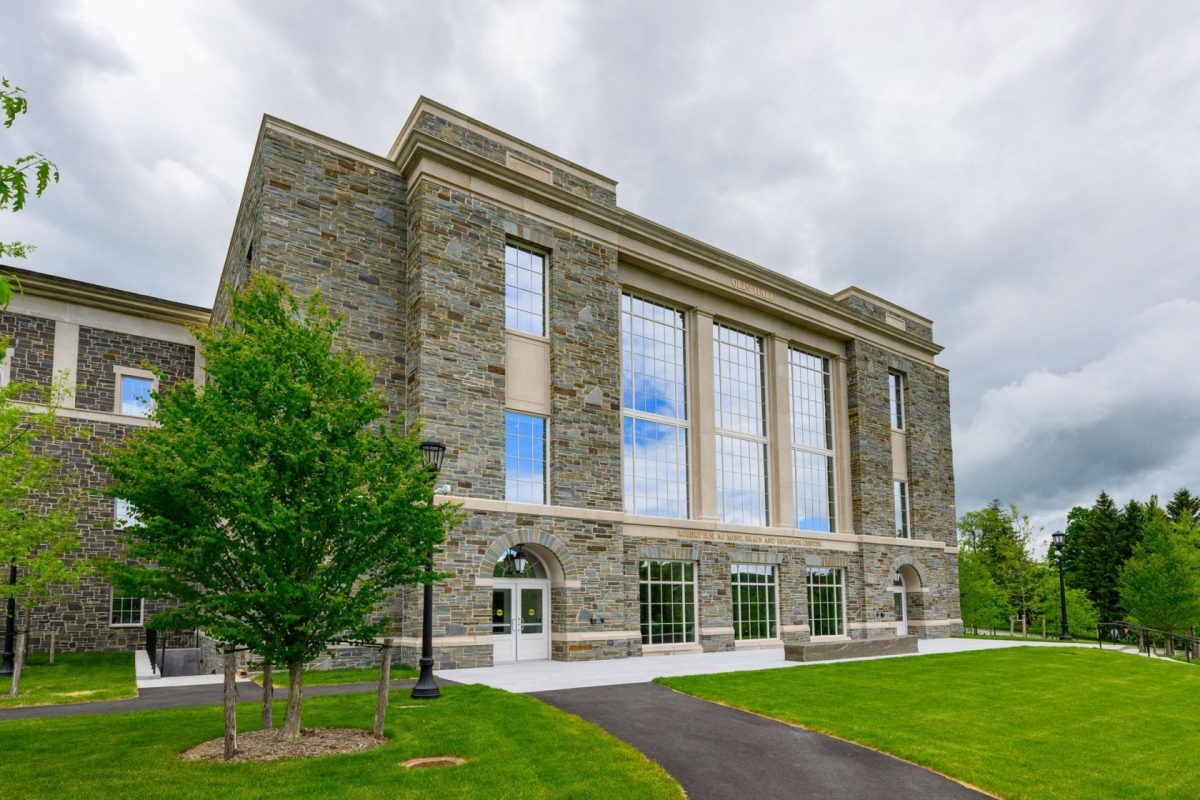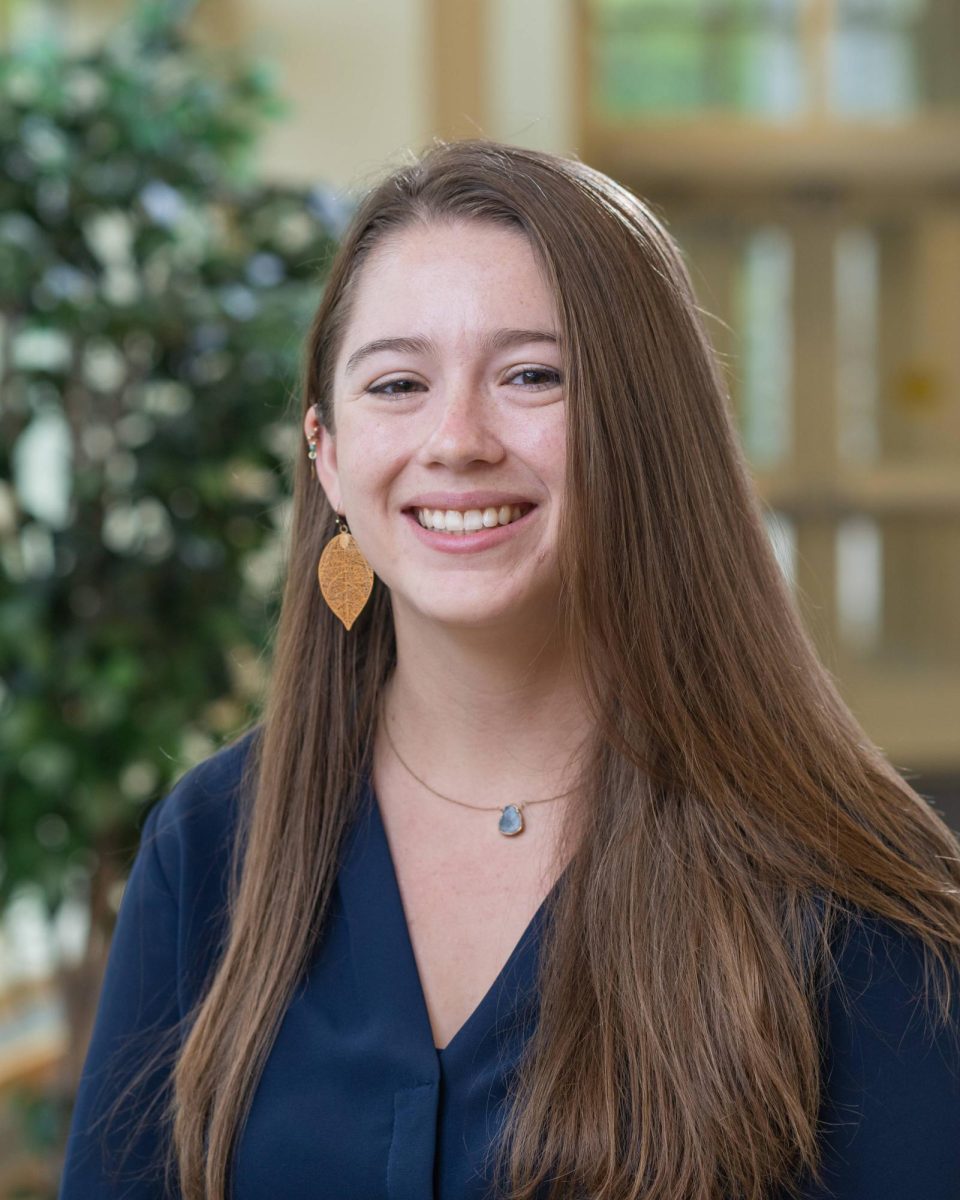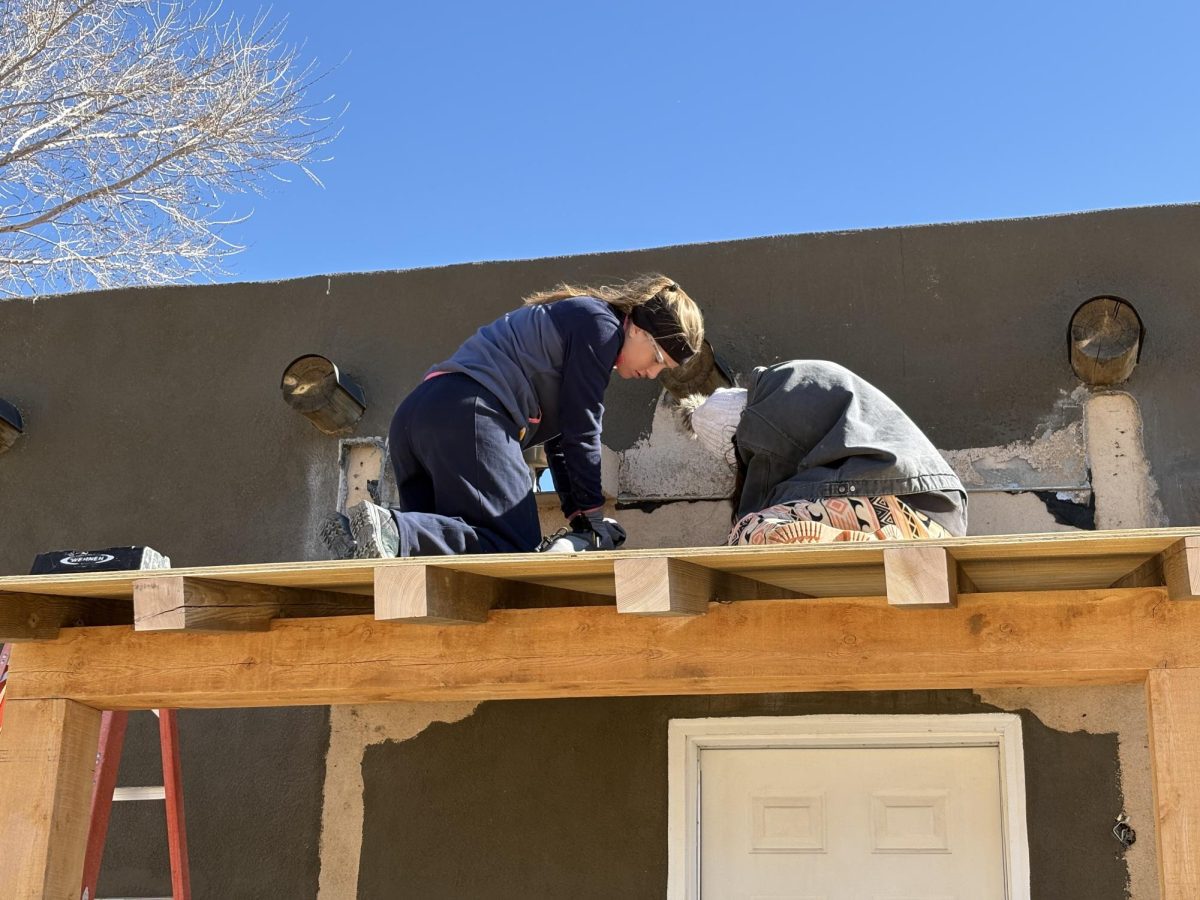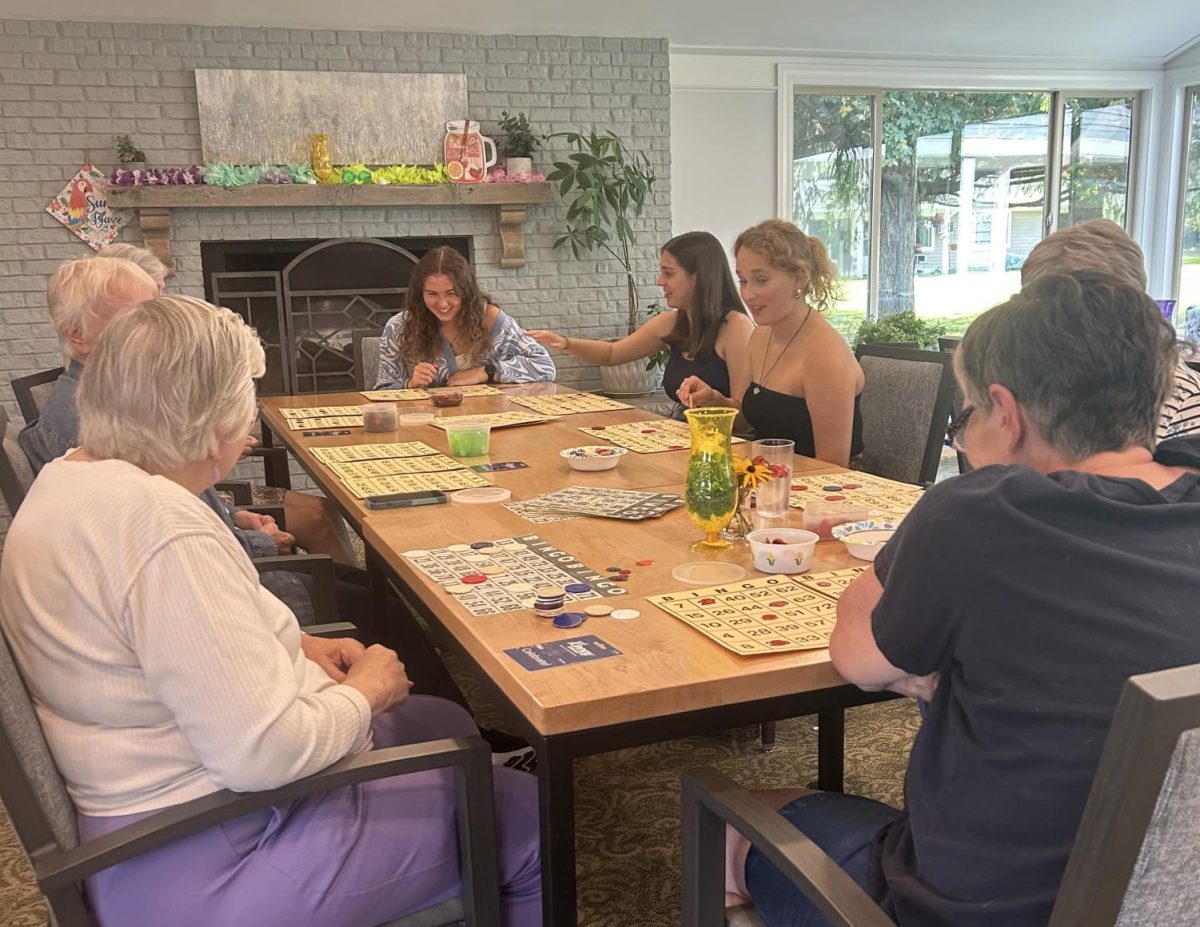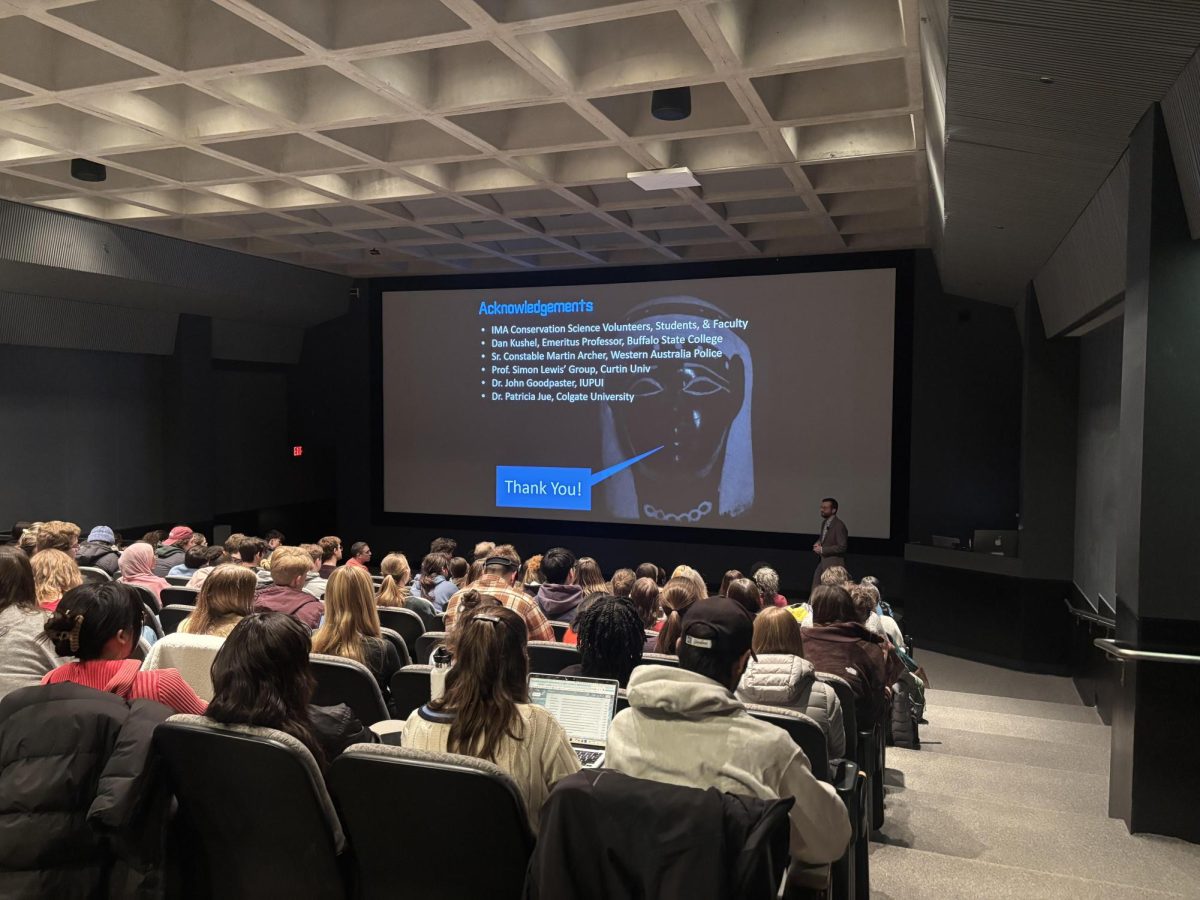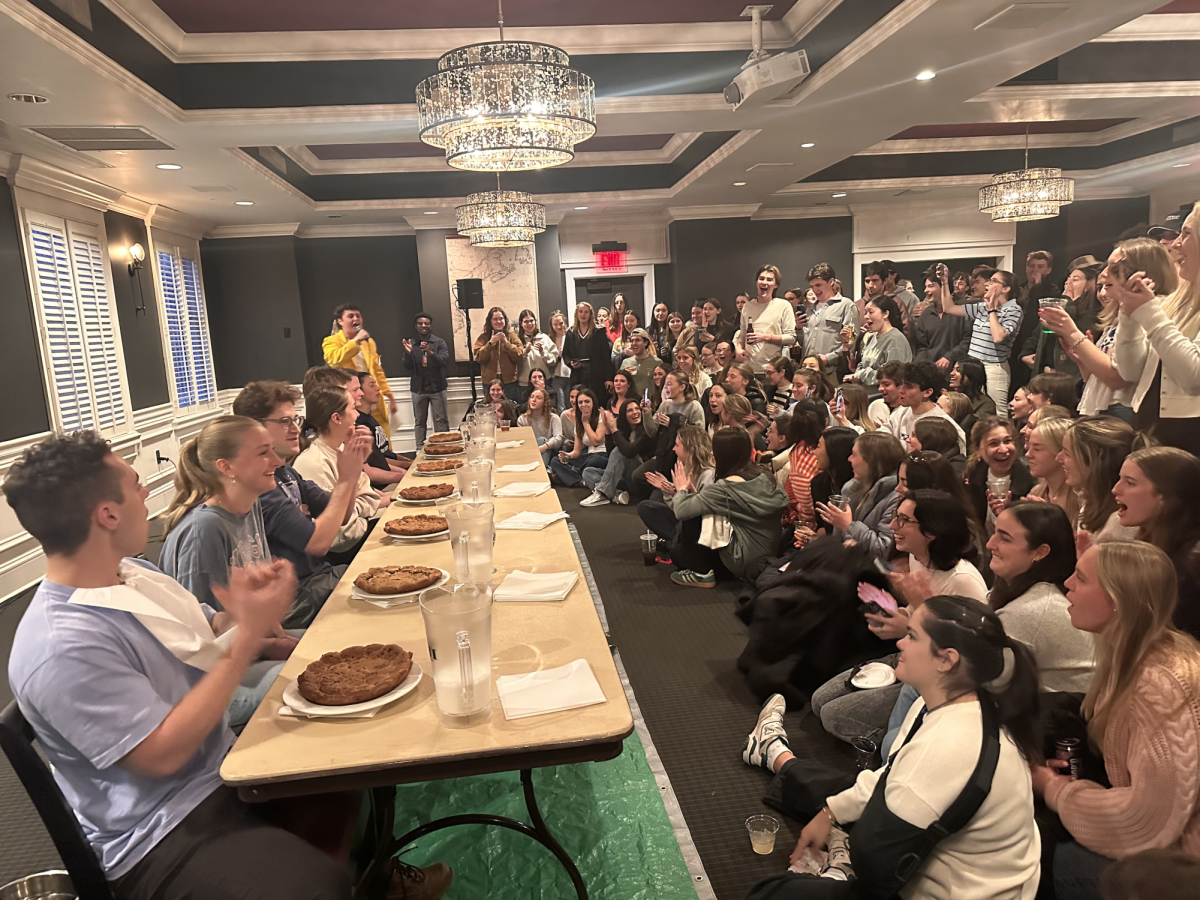Upperclassmen were once all too familiar with the sight of construction tape and barriers on Hamilton Street surrounding Olin Hall. While some may have viewed it as a burden, it resulted in the beautiful recent renovation of the building — a change that fundamentally altered the science community at Colgate University through the Robert H.N. Ho Mind, Brain and Behavior Initiative.
The building, originally named the Olin Life Sciences Building for its principal donors at the now-defunct Olin Foundation, was dedicated in 1970. It was constructed for $3 million and, after additional renovations, became Colgate’s largest academic building.
The most recent renovation initially began in May 2022 with funding from alumnus Robert H.N Ho ’56, which included the opening of the Center for Mind, Brain and Behavior. The expanded rear wing of the building includes a large, light-filled atrium and offices for faculty from biology, psychological science and neuroscience. Lab spaces in the building were also upgraded with modern equipment, allowing students and faculty to share ideas across disciplines.
The project was heavily influenced by faculty, including Professor of Psychology Carrie Keating and Professor of Biology Krista Ingram, with support from Colgate University President Brian W. Casey. The expanded building was officially dedicated in June 2024, with classes and labs fully operational by the fall.
While Olin Hall has sought to expand the sciences at Colgate since its inception almost 55 years ago, the recent renovation has turned the building into an exciting hub of 21st-century innovation. Keating first had the idea to open the space, creating a collaborative environment for students and faculty across majors.
“It’s not just about the building — it’s about what the building inspires,” Keating explained. “Now, it is totally collaborative. We have, interestingly, not just psychological science and neuroscience but biology and behavioral biology, in particular. Because one of the themes of this whole mind, brain, behavior adventure is to blend the sciences and break down the boundaries.”
This collaborative environment leads to interdisciplinary research: the epitome of liberal arts education.
“What I like about this is that these are my new neuroscience friends,” Keating said, pointing at the offices next to hers. “So I’m a social psychologist, and I’m right next door to a neuroscientist. What am I doing now? Social neuroscience. I don’t know if the building inspired that, but something happened in my brain while being here.”
The impact of the new Olin Hall reaches beyond research and into the day-to-day lives of students, too, who thoroughly enjoy their classes in the collaborative space. Sophomores Isabella Leiser and Maggie McCarthy, both roommates and psychological science majors, have felt that the building itself has shaped their experiences within the department.
“I think the renovation has really helped to have everything from the department concentrated in one area,” Leiser said. “While Olin was still under construction, my psychology professors’ offices were scattered around campus, and there did not seem to be a space for psych majors to claim. I think it’s nice that now there is.”
Beyond this cohesion, both appreciate the many spaces that the renovated Olin Hall has for completing homework — spaces that are quiet or collaborative and definitively beautiful, enabling both Leiser and McCarthy to productively complete their homework.
“I love the back atrium with all the windows for when I need to do quiet focused work. Having so much natural light makes me happier and more productive. Olin also has a lot of good study spaces for collaborative work,” Leiser said. “I love the study rooms. They do tend to get pretty popular, but if you are able to find one, they are a great place to get work done, either alone or with friends. Besides my class time, which is basically every day of the week, I use Olin to get some work done in between classes and on the weekend. I would say it varies from about an hour and a half if I just go for class, to upwards of six hours if I go there to do work on the weekends.”
McCarthy, who also enjoys doing homework in Olin, agreed with Leiser’s testimony.
“I spent a lot of time during exams last spring studying in Olin and I really fell in love with the space, especially the large windows and study spaces at that time,” McCarthy said.
The newly renovated Olin Hall is, arguably, the epitome of the liberal arts: a space for collaborative learning. For both students and professors alike, the new Olin Hall will have a tremendous impact on learning within the disciplines of mind, brain and behavior. It is clear that the building — and the STEM community at Colgate — have come a long way since the ’70s.


